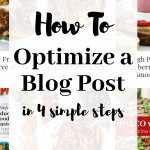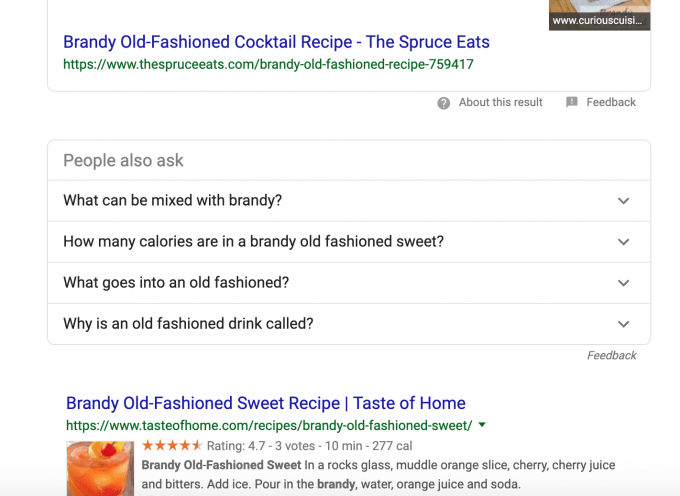This is part 2 of a 2-part series. Read Part 1 here!
Now that you’ve identified a post to optimize, and a keyword to optimize for, it’s time to start (re)writing!

Step 1: Rewrite your text for the primary keyword, and relevant related keywords
The most important part of optimizing an old post for SEO is to make sure you’re offering the kind of useful information that Google wants to see.
The trend in blogging used to be that bloggers would share unrelated personal anecdotes, and then end with a recipe. It was understandable at the time, but blogs – especially food blogs – have evolved from public diaries into resources meant to educate readers about cooking, recipes, and related skills.
If you want your content to rank, it needs to be interesting and valuable to the reader. No exceptions.
So what do you include? Well, first put yourself in the reader’s shoes and think about what they would like to know, what kinds of questions and challenges they might have with the recipe, and things like that. That’s where you can start.
To better understand specifically what information to include, complete the following steps:
1) Glance through the first page of results for the keyword that you’re trying to rank for and think about what all those pages have in common. That is a good clue about what Google wants to see. I hope this goes without saying but you should absolutely not plagiarize any of the existing content. Not only will that not help you rank, it will tank your site in the long run.
2) Review the “people also ask” keywords and phrases, which you’ll find in a callout on the first page of results. Think about including information that could answer those questions.
You can also run the keyword through AnswerThePublic.com, which will show you a massive list of questions related to your keyword. This helps you to shape your content in a way that is most helpful to readers, and also to target some related keywords/phases at the same time.
3) Speaking of related keywords, tools like Ahrefs and SEM Rush can help you find these. But you can also look to the source. Google will show you a list of related keywords at the bottom of the first page of every search result. Simply scroll down to the bottom of the first page of results and look for the list called “Searches related to [your keyword]”.
There are lots of tools that will promise to give you critical information for optimizing your post for your keyword, but the truth is this: create excellent quality, useful content for your reader and rankings will follow.
Step 2: Optimize your images
You can re-take your photos if you feel it’s necessary, but this isn’t necessary for every post, or even at all. The most important things are making sure the photos are visually engaging, and that each one contains an alt tag that simply describes what’s in the photo and contains the keyword.
Step 3: Optimize your recipe card
Assuming you have a food blog, your post will probably contain a recipe card. In addition to ensuring your recipe is complete and accurate, you must also fill out information like prep time, cook time, total time, author, yield, nutrition information (at least calories per serving), and a keyword for the recipe.
If your current recipe card plugin doesn’t allow you to include all of this information, it’s time to find a new recipe plugin. WP Recipe Maker has a free version that will give you most of what you need, and for a small annual fee, you can also get built in nutrition info for every recipe. If you are not using a recipe card plugin, you need one immediately. You will find it very difficult to rank for recipe content without one.
Step 4: Optimize your meta description
If you’re not using the Yoast plugin, you need it. The free version will do everything you need.
Yoast’s most important job is to allow you to update the meta description that tells search engines exactly what your post is about, and which is displayed in search results to tell searchers what to expect from your post, and entice them to click through. See how important a meta description is?
A meta description should be short, engaging, and contain the keyword. That’s it!




Gemma says
These tips were so helpful! I feel so overwhelmed by the use of keywords, so I really appreciate this two part series! xx
Nora (A Clean Bake) says
I’m so glad to be of help!